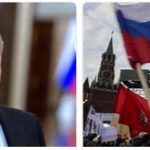Pietro, who had concluded peace with the Turks in August 1700, began operations at the end of the same month, besieging the city of Narva.
According to ejinhua, the first phase of the war was not happy: Charles XII of Sweden, who had already forced Denmark to peace, turned against the Russian army, on which he inflicted, on November 20, 1700, a complete defeat in front of Narva. And in the following years, if Peter’s armies succeeded in obtaining clear successes in Livonia and Estonia, things were not very prosperous in the Polish sector, where Russian troops also fought alongside those of August II: in 1705 a large body Russian expeditionary force, having come to the rescue of the king of Poland, was forced to retreat; in 1706 Poland was forced to conclude peace with Sweden (Altranstädt) and Peter the Great was left alone, against Charles XII who, in December 1707, began the direct attack against Russia. But already the campaign of 1708 represented a success of Peter (victory of Lesnaya, September 28), who at the same time managed to tame the rebellion of the etmanno Mazepa (v.) And to remain master of Little Russia; and finally the campaign of 1709 led to full Russian triumph: on June 27, in Poltava, the Swedish army was completely defeated, and Charles XII had to save himself by taking refuge with the Turks.
The battle of Poltava had enormous repercussions. Denmark and Poland rose again against Sweden; and Peter the Great – to whom a new campaign against Turkey had also proved unfavorable, in 1711, so much so that Russia was then forced (1712) to yield Azov again to the Sublime Porte – could prepare the conquest of Finland, which was carried out in 1713-1715. Finally in 1721 the peace of Nystad came to an end to the long conflict: for it, Russia, if it renounced Finland, nevertheless obtained Livonia, Estonia, Ingria and Karelia.
Peter the Great was thus able to open the way to the west for his empire, to make it a great, indeed now the greatest Baltic power, to insert it definitively into the so-called system of European equilibrium. And the value of a symbol therefore acquired the foundation, which he carried out in 1703, of Petersburg, which was to become the capital of the Muscovite empire: a symbol of the empire’s gravitation towards the west, of its “Europeanization” carried out both through internal reforms and through a foreign policy which had the direct consequence of Russia’s political and diplomatic connection with the great European powers. In fact, the Nordic war, regardless of the more direct links with Saxony-Poland, Denmark and Brandenburg, by the very fact of having intertwined with the war of the Spanish succession it had determined a more lively interest of the great Western powers in regard to the Muscovite empire; and especially the French diplomacy which, worried about the conflict that threatened to annihilate its “system of the east”, that is, the system of friendships and alliances with which it had tried to create a barrier against the Habsburgs in the east and the Empire, which was based on Sweden and Poland, worried that Poland would fall under the dangerous influence of Russia, had before Poltava tried to bring Sweden and Poland closer, and, after Poltava, had, in agreement with Charles XII, excited the Turks to war against Russia (the aforementioned campaign of 1711).
But, especially after the death of Queen Anne, which took place in 1714, and the accession to the throne of George of Hanover, even England which, worried about Russian dominance in the Baltic, instead threatened an Anglo-Danish-Dutch coalition. -hannoverian (and moreover the Empire) against Peter, and created major obstacles to operations in Germany and the Baltic. (To overcome the general hostility against him, Peter went to Paris in April 1717, to propose an alliance to France: without result, on the other hand, because the French government, then linked with England, did not join the ‘offering).
Indeed, after the peace of Utrecht, the intervention of the Western powers in the Nordic question had become so strong that if in the final phase of the war Peter found himself alone again, without allies, this was largely due to the action of England, which indeed sent, in 1720, its own fleet to the Baltic (see Nordic, war).
Thus, if with the peace of Nystad Peter had opened “the window on Europe” to Russia, this meant not merely the purchase of new lands in the west, an outlet to the Baltic Sea, the acquisition of influence and strong penetration into Poland, but also that from now on, Russian policy was to be implemented in close connection with general European policy.








